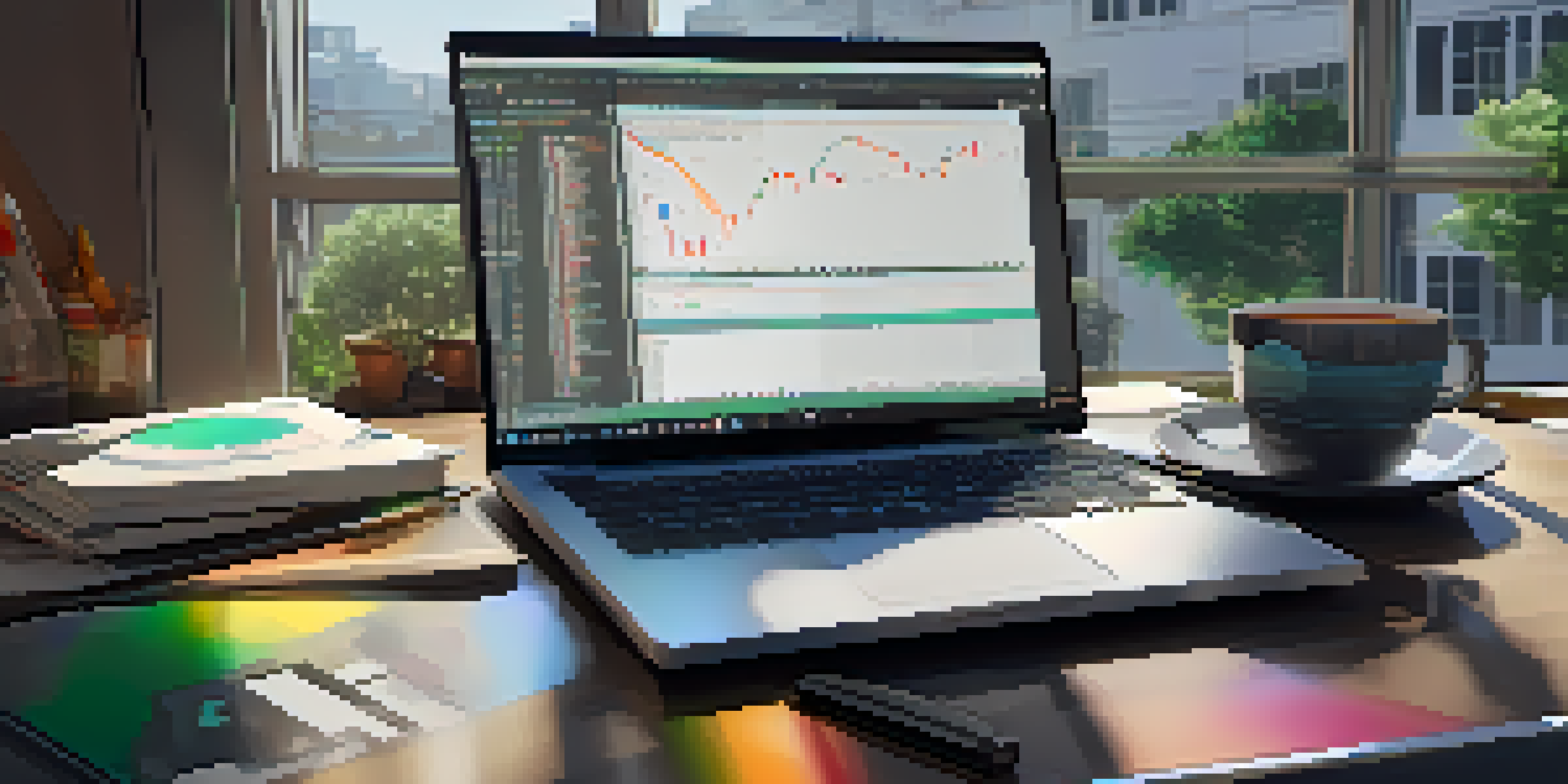Developing Your Own Crypto Trading Bot: A Step-by-Step Guide

Understanding the Basics of Crypto Trading Bots
Crypto trading bots are automated software programs that execute trades on your behalf. They analyze market data and make decisions based on predefined algorithms. This automation can help traders capitalize on market fluctuations while minimizing emotional decision-making.
In investing, what is comfortable is rarely profitable.
Imagine having a diligent assistant who never sleeps and is always on the lookout for the best trading opportunities. This is essentially what a trading bot does, tirelessly working to maximize your trading potential. By utilizing these bots, you can focus more on strategizing rather than constantly monitoring the market.
However, it's crucial to understand that while bots can enhance trading efficiency, they aren't infallible. It's vital to combine bot trading with sound risk management practices and ongoing market analysis.
Choosing the Right Programming Language for Your Bot
The first step in developing your own crypto trading bot is choosing a programming language. Popular choices include Python, JavaScript, and C++. Python is often recommended for its simplicity and extensive libraries that support trading strategies.

Think of selecting a programming language like choosing the right tool for a job. Python, for instance, allows for quick prototyping and has a strong community support, making it ideal for beginners. Alternatively, if performance is your primary concern, C++ might be the way to go.
Crypto Bots Automate Trading Tasks
Crypto trading bots analyze market data and execute trades automatically, allowing traders to focus on strategy rather than constant monitoring.
Ultimately, the best language for you will depend on your personal comfort level and the specific requirements of your trading strategy. It's worth researching the strengths of each language before making your decision.
Setting Up Your Development Environment
Once you've chosen a programming language, it's time to set up your development environment. This typically involves installing a code editor, relevant libraries, and any necessary dependencies. For Python, popular editors include PyCharm and Visual Studio Code.
The stock market is filled with individuals who know the price of everything, but the value of nothing.
Creating a conducive workspace can significantly enhance your productivity. A well-organized development environment not only helps in writing code but also in debugging and testing your trading strategies. Think of it as setting up your kitchen before cooking; everything needs to be in place for a smooth process.
Make sure you also have access to crypto exchange APIs, as these will allow your bot to communicate with the trading platform. This step is crucial for executing trades and obtaining real-time market data.
Designing Your Trading Strategy
Before you start coding, you need a solid trading strategy. This involves defining your trading goals, identifying market conditions, and selecting indicators that will guide your bot's decisions. Strategies can range from simple moving averages to complex machine learning models.
Think of your trading strategy as the blueprint for a house. Without a clear plan, you risk building something that won't stand the test of time. A well-thought-out strategy is essential for your bot's success and should be based on thorough research and backtesting.
Backtesting Validates Trading Strategies
Testing your bot with historical data, known as backtesting, helps validate its trading strategy and provides insights into potential performance.
Once you have a strategy in place, break it down into specific rules your bot can follow. These rules will dictate when your bot should enter or exit trades, ensuring consistency in its operations.
Coding Your Crypto Trading Bot
Now comes the exciting part—coding your trading bot! Start by implementing your trading strategy into the code, ensuring that each component functions as intended. Focus on creating functions for data retrieval, order execution, and risk management.
Coding a bot can feel like solving a puzzle, where each piece must fit together perfectly. Take it step by step, and don't hesitate to refer to online resources or communities if you hit a snag. Remember, debugging is a normal part of the process.
As you code, continuously test each function to ensure it's working correctly. This iterative approach will help you catch issues early and refine your bot's performance before it's deployed in a live trading environment.
Testing Your Bot with Historical Data
After coding, it's crucial to test your bot using historical market data. This process, known as backtesting, allows you to see how your bot would have performed in past market conditions. It’s an essential step to validate your trading strategy.
Backtesting can be likened to a dress rehearsal before a big show. It gives you insights into how your bot might behave without the financial risks associated with live trading. You can tweak your strategy based on these results to improve performance.
Live Deployment Requires Caution
Deploying your trading bot in live markets should start with a small capital investment to minimize risk while closely monitoring its performance.
Keep in mind that past performance is not always indicative of future results, but it can offer valuable lessons. Use this phase to refine your strategies further and identify any areas for improvement.
Deploying Your Trading Bot in Live Markets
Once you're satisfied with your bot's performance during backtesting, it's time to deploy it in live markets. Start with a small amount of capital to minimize risk, allowing you to observe how the bot performs in real-time trading conditions.
Think of this stage as sending a child off to school for the first time. You want to ensure everything is in place for success while being ready to intervene if things go awry. Monitor your bot's performance closely, especially in the initial days.

Additionally, be prepared to make adjustments as necessary. The crypto market is highly volatile, and your bot may need fine-tuning to adapt to changing conditions. Continuous monitoring will help ensure your trading bot remains effective and aligned with your goals.